It’s almost an American rite of passage to spend your childhood catching ladybugs or watching them scoot across the playground slide as you stare quietly from the edge. One of the most identifiable commonly encountered bugs, ladybugs are known for their delicate red-orange shell and adorable black polka dots. When looking at a ladybug, “danger” or “unsafe” are probably the last words to come to mind. And yet, one has to wonder: are ladybugs harmful to people, pets, or our homes?
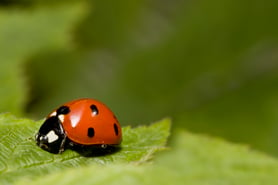
What are ladybugs (and what are they NOT)?
To answer this question, one must understand what a ladybug is and isn’t. Contrary to its name, ladybugs aren’t “bugs” at all! True bugs belong to an order of insects called Hemiptera, which comprises over 80,000 groups of species such as cicadas, aphids, planthoppers, leafhoppers, assassin bugs, bed bugs, and shield bugs. Ladybugs, on the other hand, belong to the Coleoptera order, a vast family of small beetles. Sometimes referred to as lady beetles or ladybirds, ladybugs are tiny, round, omnivorous invertebrates with short legs, small antennae, and wings that reside under a protective shell. There are over 5,000 different species of ladybugs, and they can live a surprising 2-3 years in the wild. Compared to their fellow insect cousins, that’s a long time!
Ladybugs also have a doppelganger known as the Asian lady beetle. These imposters are nearly identical to ladybugs but have very different behaviors and concerns. Asian lady beetles are considered to be a true pest, frequently infesting homes as they seek out warm, reflective surfaces such as windows. It can be difficult to tell these two beetles apart, but there are some noticeable differences if one closely compares them. Ladybugs tend to be smaller than their doppelgangers, with shorter “snouts” and a predominantly black head. Asian lady beetles, on the other hand, are larger and longer with extended “snouts” and largely white heads. Save these few key differences, ladybugs and Asian lady beetles are quite nearly identical!
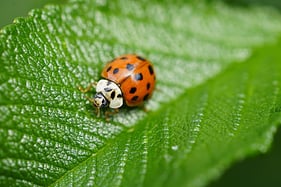
What do ladybugs eat?
Ladybugs are known to have voracious appetites. And while this may sound concerning, the ladybug’s primary and preferred food source is actually aphids - small, wingless insects that suck nutrients from plants they feed on. While some ladybugs also munch on stems of foliage and other greenery, they are highly regarded for their ability to consume large quantities of aphids (up to 5,000 in their lifetime!) and eat all day long. Ladybugs are beloved by farmers and gardeners for this very reason, and their presence in crops or gardens is generally considered a welcome sight.
Ladybugs can help reduce the number of problem pests, resulting in the need for less insecticide and pesticides. Many organic growers rely heavily on the help of ladybugs to limit the potential for pests to ruin crops and destroy fresh produce. In fact, due to the increased demand for organic food and the ladybug’s unique ability to maintain healthy crops, the actual price of ladybugs has skyrocketed. That’s right - people are buying ladybugs to release into their farms and gardens to help control pest populations naturally. There is even an illegal ladybug trade that exists. No, seriously.
It should go without saying that EcoShield does not recommend or condone taking part in any illegal activities, including the illegal buying and selling of ladybugs.
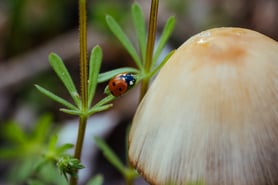
So ladybugs are harmless… right?
Well, that’s a tricky one.
Ladybugs are generally not a cause for concern, but there are a few potential adverse factors to keep in mind. For one, the rise in ladybugs used for organic farming purposes has, unsurprisingly, resulted in an unnaturally large population of ladybugs in general. Some have begun to regard them as partly beneficial and partly pest. The most popular species of ladybug in North America, the Harmonia axyridis, isn’t actually native, to begin with. These beetles were brought over from Asia in 1916 to help control crop-destroying pests; since then, their population has only grown, resulting in the pure quantity of ladybugs being considered troublesome.
In addition, while ladybugs are generally considered relatively harmless to humans, they have been known to bite or pinch. This can be painful and even problematic to those allergic to ladybugs, but ladybug bites are typically not a health hazard. Ladybugs don’t carry any known human diseases or viruses and shouldn’t spread anything dangerous by biting or pinching humans. Ladybugs within the home are also not cause for health-related concern, though large numbers of them congregating in your living spaces can certainly be unwelcome. Ladybugs in excess can potentially be an allergen irritant, as well.
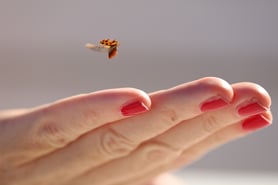
While ladybugs are considered harmless to humans, the same cannot be said for pets. Ladybugs become an issue, particularly for our canine friends, when they are ingested by unsuspecting victims. There are reports that claim the fluid secreted by ladybugs when crushed and eaten can cause damage, somewhat like a chemical burn in the animal’s gastrointestinal tract. It’s said that ingesting ladybugs may result in behavioral changes, excess drooling, and gastrointestinal issues. Though there are no reports of animal deaths following eating a ladybug, we highly recommend seeking veterinary care if you suspect your pet has become ill after eating a ladybug.
An article published in Scientific Reports shows that a ladybug’s toxicity may be indicated by its coloring. By testing the lymph, or liquid secretions released by ladybugs, researchers were able to determine that black ladybugs are the more toxic of lady species, followed by orange, red, and brown ladybugs. It is theorized that orange ladybugs are the most allergenic to humans as they contain the most variety of toxins in their secretions.
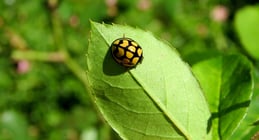
Are ladybugs in my home a problem?
For those who are not sensitive to the allergens ladybugs possess, ladybugs in the home are generally not a problem. That said, be careful when taking matters into your own hands. Ladybugs that are crushed in your home may leave behind a foul-smelling, yellowish secretion that can stain surfaces. This secretion can also instigate allergic reactions in those with sensitivity to ladybugs, resulting in coughing, sneezing, or a runny nose in those affected. If you suspect you’re experiencing an allergic reaction to ladybugs in your home, we recommend you first contact your doctor for medical attention and then contact a reputable pest control company to remove the ladybugs.
Ladybugs can become a nuisance when congregating in the masses within your home. Although not a threat, it can be uncomfortable to share your space with a large quantity of insects of any kind, no matter how benign.
What should I do if ladybugs become a problem in my home?
If you experience a ladybug infestation that you cannot manage, we recommend that you contact a trusted pest control service like EcoShield. We pride ourselves in assisting our customers with concerns that other pest services may not tackle and are here to help address any pest problems you may have. Our highly trained and professional pest technicians will examine your ladybug concerns and help you find the best course of action for removing and preventing ladybugs in your home.
EcoShield’s uniquely holistic approach to residential pest solutions provides protection from not only current pest problems, but future ones, as well. When treating your home for a particular concern, EcoShield’s experts can offer solutions that will safeguard you from unforeseen pest problems you’ve yet to experience, in addition to top-of-mind concerns. Give EcoShield a call or fill out the form on this page today and protect Future You... Future You will thank you!
